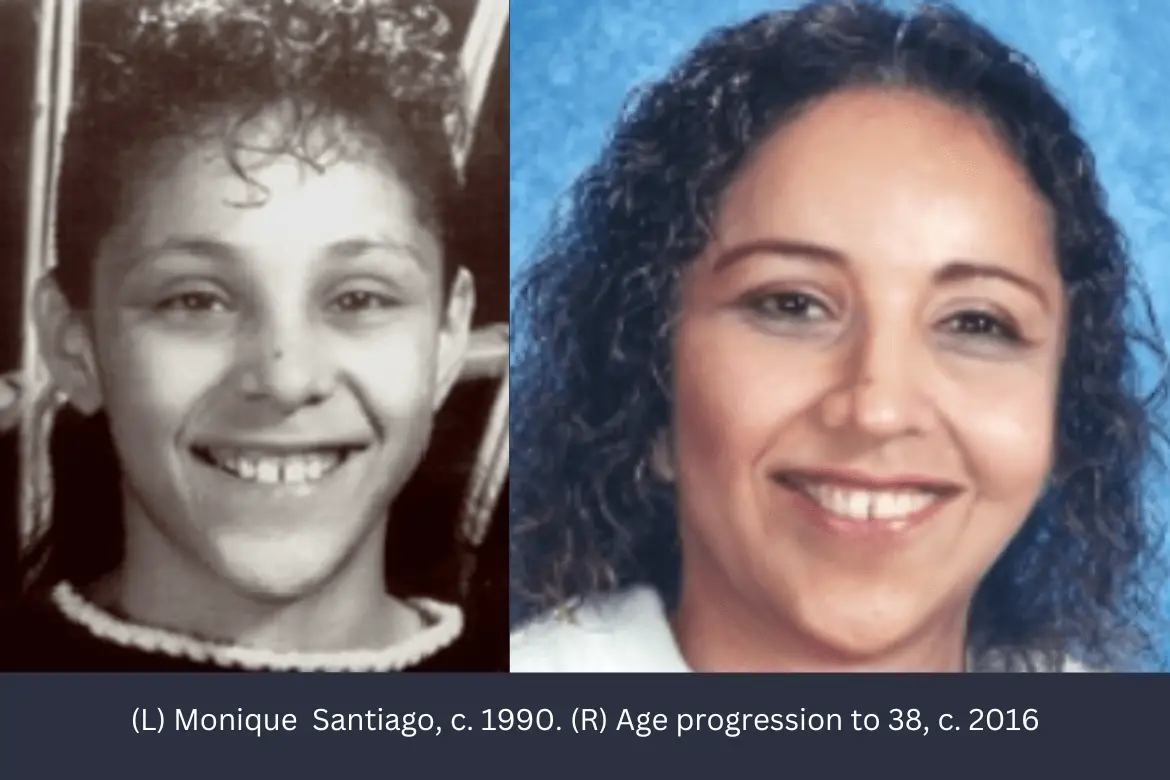Monique and her mother, Annie Graniela (also known as Anna Castro), resided in an apartment on Washington Avenue in Albany, New York.
On March 29, 1990, Monique left home at 8 a.m. to catch a city bus to her school. At noon, she called her mother to inform her that she had missed the bus that morning and would stay home from school.
When Annie returned home from work that evening, Monique was gone.
Investigation
Annie did not report her daughter missing for over eight hours after Monique disappeared, thinking she had to wait a certain amount of time before filing a police report. The delay affected an immediate search for Monique and the subsequent investigation. Therefore, by the time she informed Albany police, Monique had been gone for hours, and any potential leads had already turned cold.
However, investigators did have one possible lead in the investigation. Monique knew an adult male who admitted that he drove Monique to the State University of New York (SUNY), Albany Campus, five days before she vanished. He also admitted never asking Annie for permission to take her daughter there.
The man claimed he saw Monique in a Central Avenue parking lot across from the former Woolworth’s department store. He said he felt sorry for her and gave her money to buy snacks at the school cafeteria. While she stood in line for the food, he waited in his car and masturbated while watching her.
Naturally, investigators questioned the man within two days following Monique’s disappearance. He did not have a criminal history and signed a police statement in Monique’s case. Police never charged him with her abduction, citing insufficient evidence. Nevertheless, some investigators believed he was likely the culprit, although he maintained his innocence and claimed investigators fabricated part of his statement.
Other Possible Suspects
The detectives started looking into other possible suspects in the case and questioned Annie’s husband, Monique’s stepfather, who was in prison when Monique disappeared. They wondered if he had any altercations while incarcerated and if someone might have harmed Monique in retaliation. However, investigators determined her disappearance was not associated with her stepfather’s incarceration.
Investigators learned that Monique and her mother had relocated to Albany from New York City in the late 1980s. Before their move, there was a murder in front of their NYC residence. Investigators believed Monique might have witnessed it, so someone silenced her. However, they could find no evidence supporting their theory.
Lewis Lent

Investigators also looked into child killer Lewis Lent as a potential suspect. He was convicted for the 1990 murder of James Joseph Bernardo, 12, of Massachusetts, in 1996. New York investigators also charged him with the 1993 homicide of Sara Ann Wood, 12, abducted and killed in Litchfield, New York. Police never recovered her body. Litchfield is only 90 miles from Albany. Lent told investigators he refused to give the exact location of Sara’s body because he buried another victim close to it.
Lent is also a suspect in the disappearance of Massachusetts teen James Donald Lusher, Jr., 16, who vanished on November 6, 1992, while riding his bicycle from his father’s house to his grandmother’s residence. He later confessed to killing James and led detectives to where he said he disposed of James’s body. However, the police never found James.
Lent also may be responsible for the disappearances of Tammie Anne McCormick, 13, of Sarasota Springs, New York, and Kimberly Ann Moreau, 17, of Jay, Maine.
Investigators in Monique’s case have not found any evidence connecting James to her abduction. Monique’s mother and stepfather are now deceased. Both died of AIDS-related causes.
Sources
Image of Lewis Lent: Murderpedia
“Monique Santiago.” The Charley Project. https://charleyproject.org/case/monique-santiago
“Monique Santiago.” The Resource Center for Cold Case Missing Children’s Cases.” https://rcccmcc.com/2020/03/02/monique-santiago/



